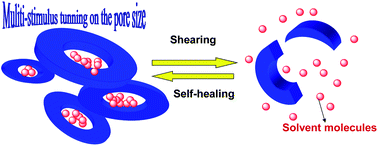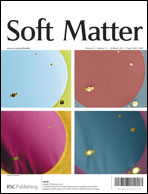Thixotropic and self-healing triggered reversible rheology switching in a peptide-based organogel with a cross-linked nano-ring pattern†‡
Abstract
A distinct and well-defined nano/micro-ring structure has been obtained from the gelation process in an asymmetric


 Please wait while we load your content...
Please wait while we load your content...